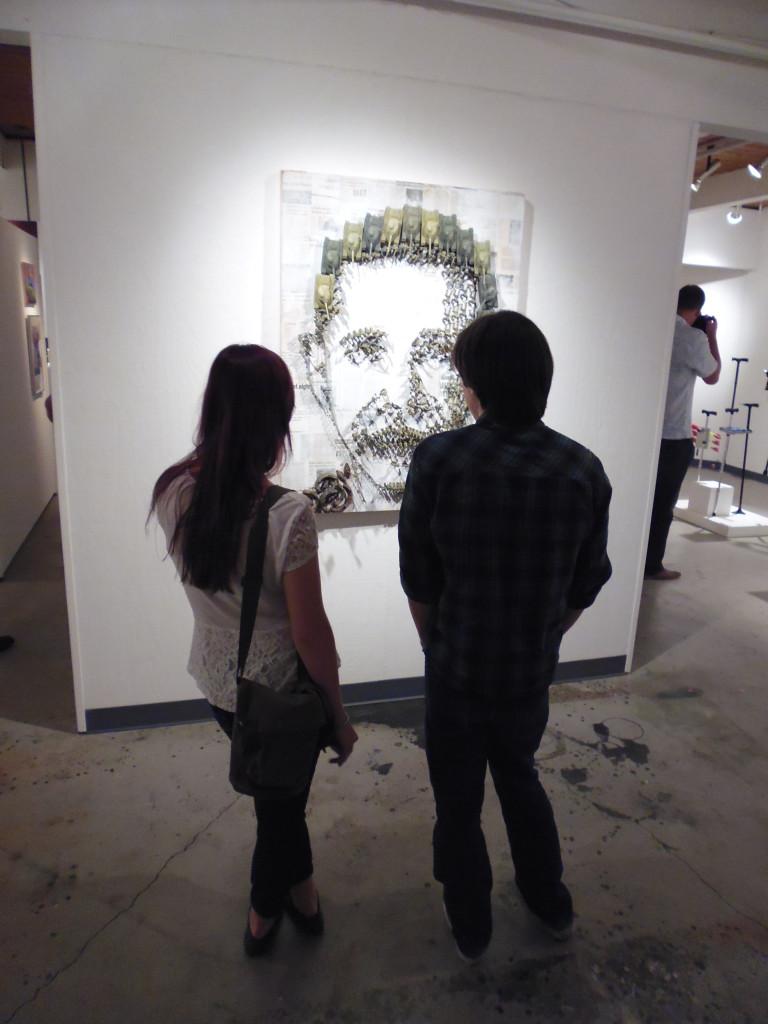Students, patrons and artists gathered in the DVC art gallery on Thursday, Sept. 5 to say yes to the “Art of NO.”
The “Art of NO,” an avant-garde movement that started in the late 50s, is now available in the DVC art gallery.
Submitted by artists from all around the country, DVC’s “Art of NO” exhibit features a provocative range of paintings and sculptures, and even pieces aiming to deny art itself. From Little Red Riding Hood to a giant Obama face composed of plastic army men and their cast shadows, the “Art of NO” pieces all share one concept in common: protest.
The “Art of NO” began in New York in 1959. Boris Lurie, a New York artist and holocaust survivor, initiated the “Art of NO,” which rejected the commonly accepted abstract expressionism and pop art of the time, highlighting topics such as repression, destruction and sexism.
Art history professor, Kristen Koblik, liked the way other past “Art of NO” work rejected particular political movements, so she decided it was time for DVC to hold an exhibit of its own.
“It’s a way to tell the temperature of where we are right now in accordance to other historical movements,” Koblik said.
The Art of No doesn’t only protest politics. In response to Michael Berens’ “DEWD,” Koblik said, “this piece says ‘no’ to traditional composition and the overall art aesthetic.”
Lindy Vargas, an art history major, is skeptical. “I’m just kind of confused. Some of the art is so interpretive people can make up their own meaning. I don’t feel it’s always interpreted correctly.”
Although some feel that interpretation and understanding do not even belong to the “Art of No” ethos.
“Whether people justify the art is irrelevant,” art history student Travis Castro said. “If it’s good enough for the artist it’s good enough for me.”
Koblik explained, “the artists feel that people ought not to say ‘yes’ at all. Your ‘yes’ or ‘no’ is irrelevant.”






































































